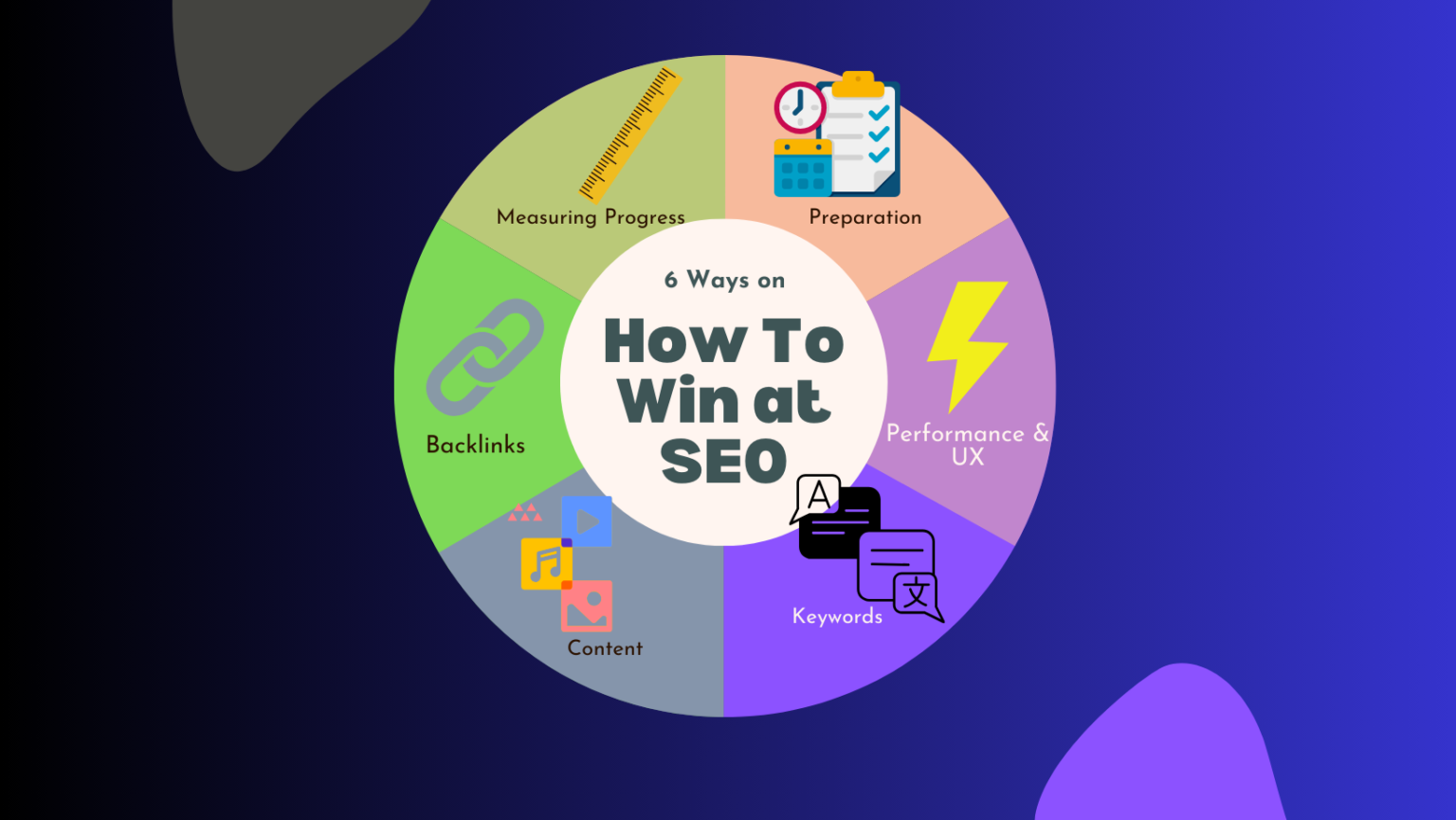
Table of Contents
Introduction
Search Engine Optimisation otherwise known as SEO, is the process of optimising your website both internally and externally to perform better in organic search results.
It’s already well-known that the majority of online experiences begin with a search engine, and organic search is still the number one way of driving traffic to your website compared to any other digital marketing medium. So, it is extremely beneficial always to have an SEO campaign at the forefront of your business.
When starting with SEO, it can get overwhelming, so we have broken it down into various topics below.
1. Preparation
At the very start, you want to do some initial checks, which include gathering data about the digital presence of your website and identifying any technical issues.
To gather data about your website and its current state of visibility on a search engine, use one of these SEO tools. You want to make a note of various metrics to evaluate and use as a baseline going forward:
• Current website traffic
• Number of organic keywords
• Keyword positions
• Average session duration
• Pages users exit most frequently
This is a good starting point, but depending on your goals and KPIs, you may have to delve into this a little more to select the metrics that best align with your goals.
You will also want to perform a site audit. This will consist of a variety of elements of your website:
• Indexing and Crawl Issues
• URL’s
• Page Titles
• Meta Tags
• Heading Tags
• Image Optimisation
• Internal and External Links
• Mobile Friendliness
• HTTPS Compliant
• Website Structure
• Domain Accessibility
• Website performance
• Schema Mark Ups
Once this is complete, you will have a good idea of how to structure the rest of the campaign. You can outline how much money you need to spend, as well as the time and effort required for the remainder of the campaign.
2. Website Performance & User Experience
Your website should be firing on all cylinders. Ensuring your website is performing at its peak must be at the forefront of the strategy. Search engines focus is on delivering the best experience for their users. A website that is slow and buggy will deliver a bad experience and will result in dropped rankings, so it is key to ensuring the performance of the website is at its highest.
You want to start by getting your website analysed by using tools like PageSpeed Insights or GTMetrix. Both tools will show you how your website is performing and if there are any areas of improvement. Use the findings from these tools to fix any issues.
The common areas that will help with performance are:
• Images – Compress or use other options such as Lazy Load.
• Caching – Server Caching or Content Delivery Network.
• Removing unused code.
• Redirects – Reducing the number of redirects on your website.
• Remove unused plugins.
The second element is user experience. Does your website appeal to the masses? Make sure your website is effective in the way that it provides users exactly with what they are looking for. Provide efficiency so that users don’t have to go through many pages to carry out an action and ensure an overall pleasant experience, leaving the users satisfied.
There are several ways to achieve this:
• Mobile-friendliness – over half of users visit websites using a mobile device. Use Google’s mobile-friendly tool to test.
• Website structure – All your webpages must be accessible within 3 clicks. Create a diagram of the structure of the website to identify issues.
• Fix indexing & crawl issues – Use Google Search Console to identify and remediate.
• URLs – Clear and concise URLs.
• Clear navigation.
• Use of breadcrumbs.
• Colour contrast and page layouts.
• Braking up long blocks of text.
3. Keywords
Keyword is like your compass; you will need keywords to measure how well your content is ranking. Using the right keywords to optimise your content is a sure-fire way of increasing your rankings.
Start by brainstorming some keywords around what you are selling/providing on your website. Then use tools like, Semrush, Ahrefs, Google and KWfinder to gather related keywords. Also, analyse which keywords your competitors are using that are performing well.
Then analyse all these keywords to get a better understanding of which ones can be used.
Keywords can be understood into the following segments:
Search Intent
Search Intent is about the purpose a user has when searching e.g. “Are home treadmills worth it”. This tells search engines that the user is aware of home treadmills but is unsure if they need one.
So, you can tailor the experience for this search intent. From this search intent, you can target the user to land on a piece of content explaining why home treadmills are worth it.
If a user searches “Buy home treadmills,” this is a good indication that the user is ready to buy, and you can target this keyword towards a product page.
Short-tail vs. long-tail keywords
Short-tail keywords are one or two words and long-tail keywords are longer.
A short-tail keyword does not describe the intent as well as a long-tail keyword. Long-tail keywords make it easier to guide users to the correct content, while short-tail keywords are slightly more difficult as they are broader.
As you begin your SEO campaign, you will want to target long-tail keywords first, as the search intent is easier to navigate. Also, long-tail keywords have less competition, making it easier to rank for them.
Once you have built up traffic to your website, you can then branch out to short-tail keywords.
Choosing your Keywords
You want to identify which keywords are relevant to you. Start with a handful of keywords, as selecting too many will make it difficult for search engines to understand what your content is about.
After using those keywords, go back and pick out another handful. Keep doing this, as you want to keep updating and optimising your content.
When creating content, do not follow the concept of creating content solely for search engines. With search engines focusing their efforts on providing the best results for users, they want content to be oriented towards the users. Therefore, create content for humans first. You want to generate content that is valuable to the end-user and is also naturally aligned with the human language.
Then, incorporate your keywords naturally. Utilising the keywords you have selected, choose one or two keywords to target and include them in the content. Add these to the page titles, heading tags, anchor text and anywhere else in the content where they fit naturally. Avoid forcing keywords anywhere, as search engines can detect this.
Maintaining a strategy of regularly updating your content is effective. Search engines aim to deliver the most recent and up-to-date content to their users. Consequently, updating your content regularly ensures your website remains at the top of the rankings.
5. Backlinks
Obtaining a backlink is a process of getting your content mentioned on a different website.
One of the main foundational principles of Google’s search engine is how they measure the importance of a website. They achieved this through a metric called PageRank. PageRank is a system for measuring importance based on the number of external websites linking to a particular website. This means that if another high-authority website links to your website, your website’s ranking will improve.
Since Google’s inception, PageRank has undergone significant changes and updates. Some argue that PageRank is no longer in use. However, the core principle remains to get your content mentioned on external websites.
To name a few ways to obtain backlinks:
• Identify and update broken\outdated links.
• Guest posting.
• Skyscraper technique.
• Forums.
• Publish comprehensive guides.
In simple terms, to gain domain authority, you will have to invest time in getting your content mentioned on third-party websites.
6. Measuring Progress
Measuring and tracking your progress is just as important as the other topics. Applying these techniques and then not checking whether any one of them has worked will not provide you insights into whether your hard work paid off. SEO takes time to fully manifest and show obvious signs. Therefore, you need to keep a constant eye on this.
Use the metrics and data that you noted down earlier to monitor and track these. If you feel like certain metrics have not improved, re-analyse, and adjust
Conclusion
SEO can be a long-term endeavour. Initially, you may not see significant improvements, but with patience and a solid strategy, you will undoubtedly reap the rewards.
This article aims to provide you with insight into key areas of an SEO strategy.
Based on your goals and niche, build a robust SEO plan that will work for you.
If you require any assistance, we are always ready to help. If you are a small business in the UK and looking for bespoke SEO services, Give us a call!
